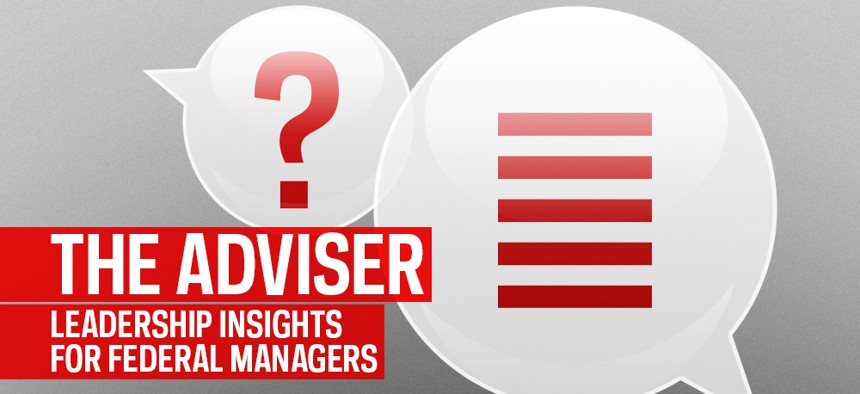
Why Government Needs More Enterprise Leaders
The challenge isn’t just allocating resources, it’s adapting to change.
At a recent conference an old friend asked me a question: “What is the key difference between leading in government and private enterprise?”
The question is difficult to answer. Government and private enterprise differ in so many dimensions: purpose, human capital, finance and funding, operations, incentives, procurement and purchasing, organizational structure, measurements of success, the role of Congress versus a board of directors.
But it all boils down to one key, yet obscure, difference: adjustment costs. What are adjustment costs, why do they matter, why are they different in government compared with private enterprise, and how do these differences affect leadership in the government?
The 1945 article “The Use of Knowledge in Society” by Austrian-born economist Friedrich Hayek offers a unique perspective on the costs and benefits of different institutions. In comparing the capitalist and communist economies, Hayek said society’s economic problem isn’t the efficient allocation of resources, but rather “one of rapid adaption to changes in the particular circumstances of time and place.”
Our world experiences all sorts of changes—what I refer to as shocks—that call for rapid adaptation of the economic system. Advancing scientific knowledge, radical as well as incremental innovations, changing weather patterns, great recessions, shifting politics and political revolutions, shifting immigration patterns, morphing terrorist threats, dwindling resources and the discovery of new ones all are part of an ongoing stream—some might even say a flood—of shocks. The problem is: How can organizations and institutions rapidly adapt to these shocks?
The cost and time spent adapting to shocks—or adjustment costs—is where government and private enterprise differ most.
Firms can adjust much faster than government. A business leader can recognize a shock, decide on a major reorganization in response and implement it in as little as a few months or as long as two to three years, depending on the size of the firm and extensiveness of the changes. In government, an equivalent decision and reorganization might take three to 10 years and cost an order of magnitude more.
Private enterprise has much lower adjustment costs than government for two main reasons:
- A chief executive, with agreement from the board of directors, can quickly reallocate decision rights. The executive could centralize decision-making to address poor reliability or decentralize it to increase innovation. Such a switch can occur quickly, even in a single board meeting.
- Failure to adjust puts the chief executive’s tenure and the firm’s market position at risk. Companies that adapt faster and have lower adjustment costs can displace slower firms.
Government has much higher adjustment costs and little competition. Reorganizing decision rights such as budget and decision authority can take years and tremendous effort at multiple levels of government. Often, the need has to become quite pressing before Congress will even consider reorganizing authorities, which delays adaptation. It would take years of working through the multitude of committees overseeing various authorities and then through both houses of Congress and the president. All these steps must be achieved before implementation even begins, which is itself a slow process.
Politicians face pressure at the polls, but a government that is slow to adapt is unlikely to face much competition from organizations with lower adjustment costs. Even with well-meaning politicians, outstanding leaders and the best public servants, government is structured to lag substantially behind current needs. This lag leads to crisis after crisis, while political actors find plentiful opportunities to make hay about government’s slow responsiveness, ineptitude and failure to adapt.
The Veterans Affairs Department’s health care debacle illustrates how high adjustment costs can play out. After more than a decade of war, demands for veteran health care have shocked a system that could not sufficiently adapt under current authorities. Only after management failures became a high-profile crisis did Congress take up the issue and begin the long process of adjusting the department’s structure and oversight.
High adjustment costs have profound consequences for government leadership. Government needs enterprise leaders—people who are able to recognize shocks and collaborate across the silos of government and coordinate existing authorities. Enterprise leaders don’t act to protect their turf—their authorities and decision rights. Such parochial self-interest would add to the adjustment costs and foster conditions that lead to the next crisis.
Through collaboration and coordination, agencies can do better to adapt to shocks and tackle wicked problems without resorting to costly and time-consuming reallocation of authorities and budgets. One great example is the collaboration between the Housing and Urban Development Department and VA to end veteran homelessness. Using each agency’s existing authorities, leaders found new methods to substantially reduce veteran homelessness.
Hayek’s argument has currency today when comparing government and private enterprise. When economic shocks call for rapid response, the key difference is the adjustment costs that create profound consequences for leadership. Government’s adjustment costs are comparatively high, but enterprise leaders can speed adaptation to changing circumstances.
Duce a mente
(May you lead by thinking)







